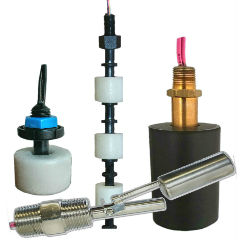Time for a New Liquid Level Float Switch (Know When to Replace Your Tank Sensors)
 Liquid level sensors or float switches are used to monitor liquid levels in tanks or other vessels and are designed to react according to predefined level heights, both high and low. Some of the ways they react are to:
Liquid level sensors or float switches are used to monitor liquid levels in tanks or other vessels and are designed to react according to predefined level heights, both high and low. Some of the ways they react are to:
- Warn of high or low level conditions
- Start or stop pumps
- Open or close valves
- Indicate how much fluid is in the tank
Liquid level float switches are used in a variety of applications. They are often used to perform critical functions and should be checked regularly to ensure they remain in top working order. We’ve put together a list of things to look out for when checking your liquid level switches.
Warning Signals Not Being Sent
If the predefined liquid level, whether high or low, is being reached and the level switch is not triggering the proper warning signals, your liquid level switch probably needs to be replaced.
Components Not Reacting
If your system is set up to activate or deactivate pumps, valves, or other components, keep an eye out for these elements not working correctly. This can indicate a problem with the switch, the electrical system, or the component itself.
Tank Readout Does Not Match Actual Levels
If your readouts and actual tank levels don’t match, there is generally a problem with the liquid level switch. For example, your tank might be full, but the readout indicates it is half full or empty. In this instance, the float that measures the liquid level may not be responding correctly due to build up. You may also need a new switch.
Be Aware of the Design
In short, you should know what your liquid level switch is supposed to do and under what circumstances it is supposed to do it. If it is not reacting correctly, you need to find out why and possibly replace it.

